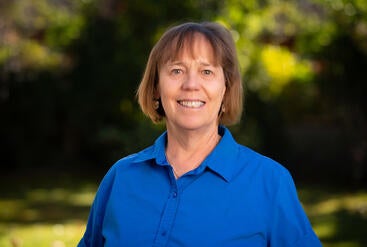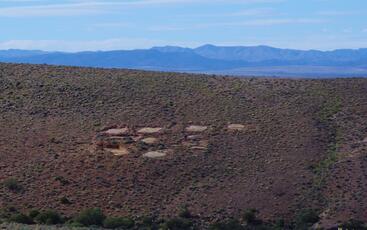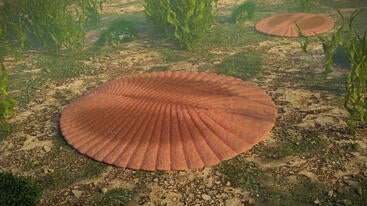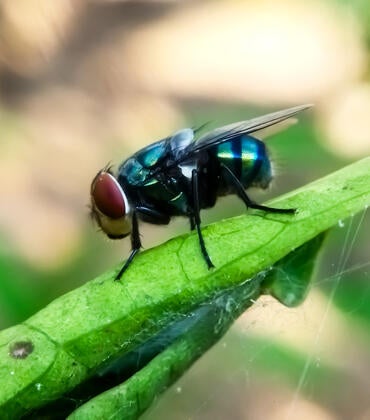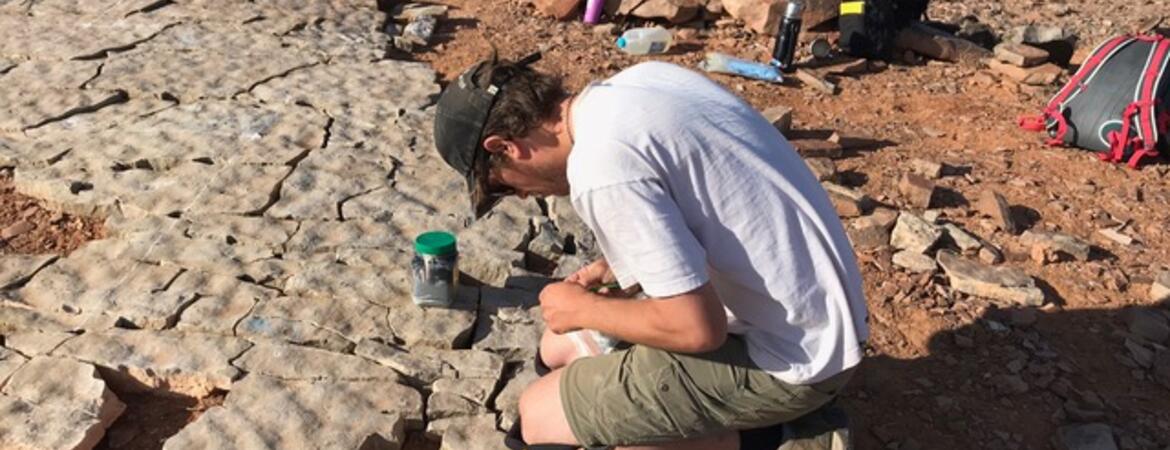
Land where a UC Riverside paleontology professor unearthed whole communities of Earth’s oldest animals is opening today to the public as a new national park in the Australian Outback.
Nilpena Ediacara National Park harbors the richest collection on Earth of preserved animal species from the Ediacaran era, around 550 million years ago. Some of the fossil beds found there are the size of a tennis court.
Exploring this land with her students for more than two decades, Professor Mary Droser has generated dozens of publications and uncovered strange, ancient animals previously unknown to science.
Given the prominence of her discoveries, Australian officials signed a memorandum of understanding in 2019 supporting Droser and other UCR researchers in their continued work on the roughly 148,000 acres of land now owned by the government.
On signing the agreement, the then South Australian Premier Steven Marshall said, “Professor Droser’s research has contributed greatly to the global significance of the Nilpena site. She and her colleagues at UCR have an important role to play in preserving this land and in continuing to explore it for clues about Earth’s ancient past.”
The government has now expanded access to the land and its treasures to the public at large, with the opening today of the park.
“UCR has had a presence at Nilpena for over 20 years, and this park is the culmination of a lot of work my students and I have done there,” Droser said. “To think this park will exist because of our work — it’s all very, very exciting!”
Sharing in the enthusiasm is South Australian Minister for Climate, Environment, and Water Susan Close.
"We are incredibly excited today about the opening of the national park, which reflects the significance of sustained, globally important research," Close said. "The National Parks & Wildlife Service will manage the land to protect the fossils in perpetuity, and continue access for generations of researchers to explore the beginnings of animal life on our planet."
Scientists, students, and fossil enthusiasts can now visit the park’s visitor hub and view fossils up-close as part of an audio-visual fossil experience. Exclusive guided tours to the Nilpena fossil field will also be offered along boardwalks and viewing platforms installed to ensure sustainable access to key sites.
A series of storms buried the Ediacaran sea floor at Nilpena in layers of sediment, helping preserve sandstone impressions of the soft-bodied animal communities that lived there. These unique conditions allowed Droser and her research partner, James Gehling of the South Australia Museum, to invent a new method for studying fossils.
Typically, paleontologists collect fossils and bring them to a museum for further study. Instead, Droser and Gehling excavate Nilpena fossil beds, flip them over, piece them together like a puzzle and leave them in the field.
“This way, we’re able to piece together whole ecosystems,” Droser said. “Looking at them is like snorkeling around on the ancient sea floor, instead of looking at a single animal in a fish tank.”
More than 40 species of Ediacaran fossils have been discovered at Nilpena, and Droser is convinced there are many more still to be discovered. The scientific community at large appears to agree on its significance.
In 2021 Nilpena was placed on Australia’s World Heritage Tentative List, and Droser is supporting a bid for full World Heritage List status. The list is part of the United Nations Educational, Scientific and Cultural Organization’s efforts to identify and preserve places holding outstanding value to humanity.
